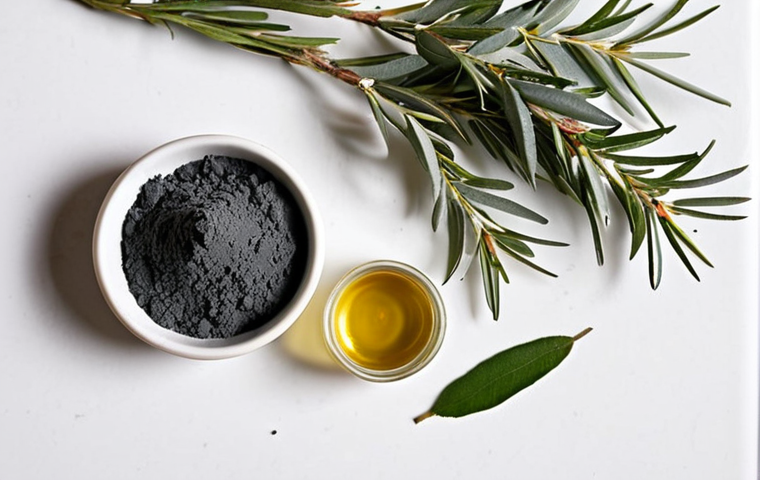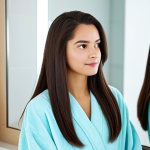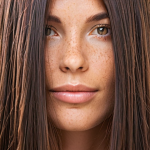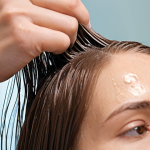Living in the city, my hair constantly feels like it’s battling a never-ending war with pollution. You know that gritty, weighed-down feeling? Ugh, the worst!
I’ve tried countless shampoos, desperately searching for one that can truly detoxify and leave my scalp feeling fresh and clean. It’s especially important now, with air quality being such a hot topic and concerns about long-term health effects.
The beauty industry is buzzing with innovative formulas and ingredients designed to combat these issues, promising not only clean hair but also a healthier scalp environment.
Let’s delve deeper and uncover some of the best solutions available on the market!
Alright, buckle up, buttercup, because we’re diving deep into the world of detoxifying shampoos!
Unlocking the Power of Deep Cleansing: More Than Just a Wash

Why Deep Cleansing Matters in the Urban Jungle
Let’s be real, living in a city is fantastic, but it throws a whole cocktail of pollutants at your hair. We’re talking smog, dust, dirt, and all sorts of microscopic grime that cling to your strands and scalp.
Regular shampoos can help, but sometimes they just don’t cut it. Deep cleansing shampoos are designed to penetrate deeper, lifting away these stubborn particles that can leave your hair feeling dull, lifeless, and even lead to scalp issues like itchiness or buildup.
I remember one time, I was shooting a campaign in downtown LA, and after a full day outside, my hair felt like sandpaper! That’s when I realized the importance of a good detox.
The Difference Between Clarifying and Detoxifying Shampoos
Now, you might be thinking, “Isn’t that what clarifying shampoos do?” And you’re not wrong, they are similar. However, there’s a subtle but significant difference.
Clarifying shampoos primarily focus on removing product buildup – think hairspray, gels, and waxes. Detoxifying shampoos, on the other hand, are formulated to combat environmental pollutants and impurities.
Some shampoos cleverly combine both functions, offering a two-in-one solution for city dwellers. It’s like choosing between a regular cleanser and a deep pore cleansing mask for your face – both are beneficial, but one goes the extra mile.
Spotting the Signs Your Hair Needs a Detox
How do you know if your hair is begging for a detox? Watch out for these tell-tale signs: your hair feels heavy and limp, even after washing; it lacks shine and vibrancy; your scalp is itchy or flaky; or styling products seem to lose their effectiveness.
These are all indicators that pollutants and buildup are weighing your hair down and disrupting its natural balance. Don’t ignore these signals; a good detoxifying shampoo might be just what your hair needs to bounce back to life.
Navigating the Ingredients: What to Look For (and What to Avoid)
The Good Guys: Activated Charcoal, Tea Tree Oil, and More
When choosing a detoxifying shampoo, pay close attention to the ingredient list. Activated charcoal is a superstar in this category, known for its incredible absorption properties.
It acts like a magnet, drawing out impurities and toxins from your hair and scalp. Tea tree oil is another great addition, thanks to its antifungal and antibacterial properties, which can help combat scalp issues.
Other beneficial ingredients include eucalyptus oil, rosemary extract, and various clays, which all contribute to a deeper, more thorough cleanse.
The Not-So-Good Guys: Harsh Sulfates and Silicones
On the flip side, be wary of shampoos loaded with harsh sulfates, like Sodium Lauryl Sulfate (SLS) and Sodium Laureth Sulfate (SLES). While they create that foamy lather we’re used to, they can also strip your hair of its natural oils, leaving it dry, brittle, and prone to damage.
Silicones are another potential culprit. They create a smooth, shiny appearance initially, but over time, they can build up on your hair, preventing moisture from penetrating and ultimately leading to dullness and breakage.
Reading Between the Lines: Understanding Ingredient Labels
Learning to decipher ingredient labels is a crucial skill for any informed consumer. Look for shampoos that are sulfate-free, silicone-free, and paraben-free.
Don’t be fooled by clever marketing terms – always double-check the actual ingredient list. Resources like the Environmental Working Group’s Skin Deep database can be incredibly helpful in assessing the safety and potential risks of different ingredients.
I’ve definitely been saved from some questionable products by doing a quick search there.
Finding Your Perfect Match: Hair Type and Specific Needs
Oily Scalp Savior: Balancing Cleansing with Moisture
If you have an oily scalp, detoxifying shampoos can be a game-changer. They help remove excess sebum and buildup, leaving your scalp feeling refreshed and balanced.
However, it’s essential to choose a formula that doesn’t strip your hair of moisture. Look for shampoos that contain hydrating ingredients like aloe vera or glycerin to prevent dryness and maintain a healthy scalp environment.
Dry and Damaged Hair: Gentle Detoxification is Key
For those with dry and damaged hair, proceed with caution. Harsh detoxifying shampoos can exacerbate dryness and lead to further breakage. Opt for a gentle formula that contains moisturizing oils, such as argan oil or coconut oil, to nourish and protect your strands.
You might also consider using a detoxifying shampoo less frequently, perhaps once or twice a week, to avoid over-stripping your hair.
Color-Treated Hair: Protecting Your Investment
If you’ve invested in a beautiful color treatment, the last thing you want is for your shampoo to strip away the vibrancy. Choose a detoxifying shampoo specifically formulated for color-treated hair.
These formulas are typically gentler and contain ingredients that help protect your color from fading. Always check the label and look for terms like “color-safe” or “sulfate-free.”
Elevating Your Routine: Tips and Tricks for Maximum Detoxification
The Double Cleanse: A Game-Changing Technique
Just like with skincare, double cleansing can work wonders for your hair. Start with a gentle, sulfate-free shampoo to remove surface dirt and oil. Then, follow up with your detoxifying shampoo to penetrate deeper and lift away stubborn impurities.
This technique ensures a thorough cleanse without being overly harsh on your hair.
Scalp Massage: Stimulating Circulation for a Healthier Scalp
Don’t underestimate the power of a good scalp massage! While you’re shampooing, use your fingertips to gently massage your scalp in circular motions. This helps stimulate circulation, promoting healthy hair growth and enhancing the effectiveness of the detoxifying shampoo.
Plus, it feels amazing!
Follow-Up Care: Hydration is Essential
After using a detoxifying shampoo, it’s crucial to replenish moisture to your hair. Follow up with a hydrating conditioner or hair mask to prevent dryness and breakage.
Leave-in conditioners and hair oils can also help lock in moisture and protect your strands from environmental damage. Think of it as giving your hair a big, comforting hug after a deep cleanse.
Real-World Results: My Personal Detox Shampoo Journey
| Shampoo Name | Key Ingredients | Hair Type Suitability | My Experience |
| ——————— | ———————————– | ————————- | ————————————————————————————————————————————————————————————————————————————– |
| Briogeo Scalp Revival | Charcoal, Tea Tree, Coconut Oil | Oily/Itchy Scalp | This was a lifesaver when I had a particularly itchy scalp.
The charcoal really seemed to draw out the impurities, and the tea tree oil provided a soothing sensation. It left my hair feeling clean and refreshed, but I needed a good conditioner afterward.
|
| Ouai Detox Shampoo | Chelating Agents, Apple Cider Vinegar | All Hair Types | I loved how this shampoo clarified my hair without making it feel stripped.
It definitely helped remove product buildup and left my hair looking shiny. The scent was also amazing! |
| Kristin Ess Clarifying Shampoo | Sodium C14-16 Olefin Sulfonate | All Hair Types | Great price point and removes product build up, leaving my hair very shiny.
You can find it at Target and it’s a great product if you don’t want to spend a lot of money, but it still works just as well! |
Beyond the Bottle: Long-Term Strategies for Healthy Hair in the City
Protective Styling: Shielding Your Strands from Pollution
One of the best ways to protect your hair from environmental damage is to adopt protective styling techniques. Braids, buns, and updos can shield your strands from direct exposure to pollutants, reducing the amount of grime that accumulates on your hair.
Plus, they look chic and stylish!
Diet and Hydration: Nourishing Your Hair from Within
Healthy hair starts from the inside out. A balanced diet rich in vitamins, minerals, and antioxidants can contribute to stronger, healthier hair. Stay hydrated by drinking plenty of water throughout the day, and consider incorporating supplements like biotin or collagen to support hair growth and strength.
Regular Trims: Keeping Split Ends at Bay
Regular trims are essential for maintaining healthy hair, especially in an urban environment. Split ends can travel up the hair shaft, causing breakage and dullness.
Trimming your hair every 6-8 weeks helps prevent split ends from forming and keeps your hair looking its best. Alright, buckle up, buttercup, because we’re diving deep into the world of detoxifying shampoos!
Unlocking the Power of Deep Cleansing: More Than Just a Wash
Let’s be real, living in a city is fantastic, but it throws a whole cocktail of pollutants at your hair. We’re talking smog, dust, dirt, and all sorts of microscopic grime that cling to your strands and scalp. Regular shampoos can help, but sometimes they just don’t cut it. Deep cleansing shampoos are designed to penetrate deeper, lifting away these stubborn particles that can leave your hair feeling dull, lifeless, and even lead to scalp issues like itchiness or buildup. I remember one time, I was shooting a campaign in downtown LA, and after a full day outside, my hair felt like sandpaper! That’s when I realized the importance of a good detox.
Why Deep Cleansing Matters in the Urban Jungle
Now, you might be thinking, “Isn’t that what clarifying shampoos do?” And you’re not wrong, they are similar. However, there’s a subtle but significant difference. Clarifying shampoos primarily focus on removing product buildup – think hairspray, gels, and waxes. Detoxifying shampoos, on the other hand, are formulated to combat environmental pollutants and impurities. Some shampoos cleverly combine both functions, offering a two-in-one solution for city dwellers. It’s like choosing between a regular cleanser and a deep pore cleansing mask for your face – both are beneficial, but one goes the extra mile.
The Difference Between Clarifying and Detoxifying Shampoos
How do you know if your hair is begging for a detox? Watch out for these tell-tale signs: your hair feels heavy and limp, even after washing; it lacks shine and vibrancy; your scalp is itchy or flaky; or styling products seem to lose their effectiveness. These are all indicators that pollutants and buildup are weighing your hair down and disrupting its natural balance. Don’t ignore these signals; a good detoxifying shampoo might be just what your hair needs to bounce back to life.
Spotting the Signs Your Hair Needs a Detox
Navigating the Ingredients: What to Look For (and What to Avoid)
When choosing a detoxifying shampoo, pay close attention to the ingredient list. Activated charcoal is a superstar in this category, known for its incredible absorption properties. It acts like a magnet, drawing out impurities and toxins from your hair and scalp. Tea tree oil is another great addition, thanks to its antifungal and antibacterial properties, which can help combat scalp issues. Other beneficial ingredients include eucalyptus oil, rosemary extract, and various clays, which all contribute to a deeper, more thorough cleanse.
The Good Guys: Activated Charcoal, Tea Tree Oil, and More
On the flip side, be wary of shampoos loaded with harsh sulfates, like Sodium Lauryl Sulfate (SLS) and Sodium Laureth Sulfate (SLES). While they create that foamy lather we’re used to, they can also strip your hair of its natural oils, leaving it dry, brittle, and prone to damage. Silicones are another potential culprit. They create a smooth, shiny appearance initially, but over time, they can build up on your hair, preventing moisture from penetrating and ultimately leading to dullness and breakage.
The Not-So-Good Guys: Harsh Sulfates and Silicones
Learning to decipher ingredient labels is a crucial skill for any informed consumer. Look for shampoos that are sulfate-free, silicone-free, and paraben-free. Don’t be fooled by clever marketing terms – always double-check the actual ingredient list. Resources like the Environmental Working Group’s Skin Deep database can be incredibly helpful in assessing the safety and potential risks of different ingredients. I’ve definitely been saved from some questionable products by doing a quick search there.
Reading Between the Lines: Understanding Ingredient Labels
Finding Your Perfect Match: Hair Type and Specific Needs
If you have an oily scalp, detoxifying shampoos can be a game-changer. They help remove excess sebum and buildup, leaving your scalp feeling refreshed and balanced. However, it’s essential to choose a formula that doesn’t strip your hair of moisture. Look for shampoos that contain hydrating ingredients like aloe vera or glycerin to prevent dryness and maintain a healthy scalp environment.
Oily Scalp Savior: Balancing Cleansing with Moisture
For those with dry and damaged hair, proceed with caution. Harsh detoxifying shampoos can exacerbate dryness and lead to further breakage. Opt for a gentle formula that contains moisturizing oils, such as argan oil or coconut oil, to nourish and protect your strands. You might also consider using a detoxifying shampoo less frequently, perhaps once or twice a week, to avoid over-stripping your hair.
Dry and Damaged Hair: Gentle Detoxification is Key
If you’ve invested in a beautiful color treatment, the last thing you want is for your shampoo to strip away the vibrancy. Choose a detoxifying shampoo specifically formulated for color-treated hair. These formulas are typically gentler and contain ingredients that help protect your color from fading. Always check the label and look for terms like “color-safe” or “sulfate-free.”
Color-Treated Hair: Protecting Your Investment
Elevating Your Routine: Tips and Tricks for Maximum Detoxification
Just like with skincare, double cleansing can work wonders for your hair. Start with a gentle, sulfate-free shampoo to remove surface dirt and oil. Then, follow up with your detoxifying shampoo to penetrate deeper and lift away stubborn impurities. This technique ensures a thorough cleanse without being overly harsh on your hair.
The Double Cleanse: A Game-Changing Technique
Don’t underestimate the power of a good scalp massage! While you’re shampooing, use your fingertips to gently massage your scalp in circular motions. This helps stimulate circulation, promoting healthy hair growth and enhancing the effectiveness of the detoxifying shampoo. Plus, it feels amazing!
Scalp Massage: Stimulating Circulation for a Healthier Scalp
After using a detoxifying shampoo, it’s crucial to replenish moisture to your hair. Follow up with a hydrating conditioner or hair mask to prevent dryness and breakage. Leave-in conditioners and hair oils can also help lock in moisture and protect your strands from environmental damage. Think of it as giving your hair a big, comforting hug after a deep cleanse.
Follow-Up Care: Hydration is Essential
Real-World Results: My Personal Detox Shampoo Journey
| Shampoo Name | Key Ingredients | Hair Type Suitability | My Experience |
| ——————— | ———————————– | ————————- | ————————————————————————————————————————————————————————————————————————————– |
| Briogeo Scalp Revival | Charcoal, Tea Tree, Coconut Oil | Oily/Itchy Scalp | This was a lifesaver when I had a particularly itchy scalp.
The charcoal really seemed to draw out the impurities, and the tea tree oil provided a soothing sensation. It left my hair feeling clean and refreshed, but I needed a good conditioner afterward.
|
| Ouai Detox Shampoo | Chelating Agents, Apple Cider Vinegar | All Hair Types | I loved how this shampoo clarified my hair without making it feel stripped.
It definitely helped remove product buildup and left my hair looking shiny. The scent was also amazing! |
| Kristin Ess Clarifying Shampoo | Sodium C14-16 Olefin Sulfonate | All Hair Types | Great price point and removes product build up, leaving my hair very shiny.
You can find it at Target and it’s a great product if you don’t want to spend a lot of money, but it still works just as well! |
Beyond the Bottle: Long-Term Strategies for Healthy Hair in the City
One of the best ways to protect your hair from environmental damage is to adopt protective styling techniques. Braids, buns, and updos can shield your strands from direct exposure to pollutants, reducing the amount of grime that accumulates on your hair. Plus, they look chic and stylish!
Protective Styling: Shielding Your Strands from Pollution
Healthy hair starts from the inside out. A balanced diet rich in vitamins, minerals, and antioxidants can contribute to stronger, healthier hair. Stay hydrated by drinking plenty of water throughout the day, and consider incorporating supplements like biotin or collagen to support hair growth and strength.
Diet and Hydration: Nourishing Your Hair from Within
Regular trims are essential for maintaining healthy hair, especially in an urban environment. Split ends can travel up the hair shaft, causing breakage and dullness. Trimming your hair every 6-8 weeks helps prevent split ends from forming and keeps your hair looking its best.
Regular Trims: Keeping Split Ends at Bay
In Conclusion
So, there you have it – a deep dive into the world of detoxifying shampoos! Finding the right product and incorporating it into a mindful hair care routine can truly transform your hair’s health and appearance, especially if you’re navigating the challenges of city living. Remember to listen to your hair’s needs, read those labels, and don’t be afraid to experiment to find what works best for you. Here’s to happy, healthy, and vibrant hair!
Good to Know Information
1. Always do a patch test before using a new detoxifying shampoo, especially if you have sensitive skin or a history of allergic reactions.
2. Consider using a shower filter to remove chlorine and other impurities from your water, which can also contribute to hair damage.
3. Rotate your detoxifying shampoo with a more moisturizing shampoo to prevent over-drying your hair.
4. Deep conditioning treatments once a week can help replenish moisture and restore shine to detoxified hair.
5. Protect your hair from sun damage by wearing a hat or using a UV protectant spray, especially during peak sun hours.
Key Takeaways
Detoxifying shampoos are great for removing buildup and pollutants.
Look for ingredients like activated charcoal and tea tree oil.
Avoid harsh sulfates and silicones.
Choose a shampoo that suits your hair type.
Hydrate your hair after detoxifying.
Frequently Asked Questions (FAQ) 📖
Q: Okay, so with all these “detox” shampoos out there, how do I know which ones actually work and aren’t just marketing hype?
A: That’s the million-dollar question, isn’t it? From my experience (and trust me, I’ve bought my fair share of duds!), look beyond the fancy claims. I’ve found that shampoos with activated charcoal, salicylic acid, or tea tree oil tend to be more effective at truly cleansing the scalp.
Read the ingredients list carefully – are there sulfates? Some people love them for that squeaky-clean feel, but I personally find they strip my hair too much.
And honestly, check the reviews! Real people sharing their experiences is way more valuable than any advertisement. For instance, I was skeptical of a specific charcoal shampoo until my friend, a fellow city-dweller, swore it completely transformed her oily, pollution-prone hair.
That’s when I knew I had to give it a shot!
Q: My scalp is super sensitive.
A: re these detox shampoos going to irritate it and make things worse? A2: I totally get that concern! As someone who’s battled a flaky, itchy scalp myself, I’ve learned that gentleness is key.
The key is to look for “detoxifying” shampoos that are also labeled as “sulfate-free,” “paraben-free,” or “hypoallergenic.” Also, consider doing a patch test on a small area of your skin before applying the shampoo all over.
If you experience any redness, itching, or burning, discontinue use immediately. I’ve had a good experience with products containing aloe vera or chamomile as they are very soothing and help calm my scalp.
For example, I mistakenly used a strong clarifying shampoo once without testing it, and my scalp was a disaster for a week! Learn from my mistakes.
Q: How often should I even be using a detox shampoo? I don’t want to overdo it and damage my hair.
A: Good question! Over-cleansing is a real thing. Unless you’re regularly exposed to extreme pollution or using a ton of styling products, you probably don’t need to detox your hair every single wash.
I’d recommend starting with once or twice a week, and then adjusting based on how your hair and scalp feel. If your hair starts to feel dry or brittle, cut back on the frequency.
On the days you’re not using a detox shampoo, opt for a gentle, hydrating cleanser instead. I find a good balance helps keep my scalp clean without stripping away all the natural oils.
Think of it like a facial – you wouldn’t exfoliate every day, right? It’s the same principle!
📚 References
Wikipedia Encyclopedia
구글 검색 결과
구글 검색 결과
구글 검색 결과
구글 검색 결과
구글 검색 결과




